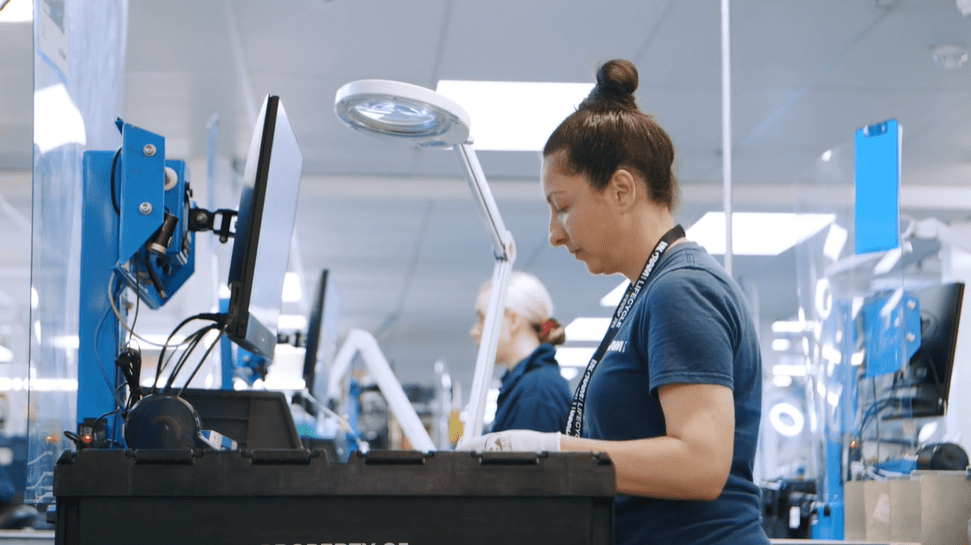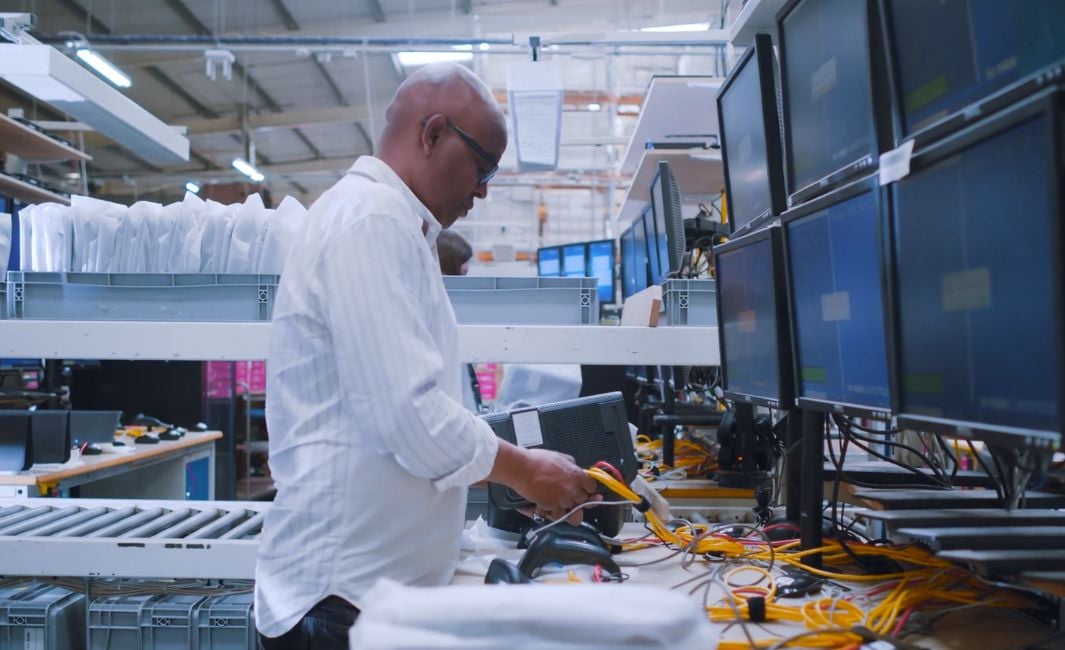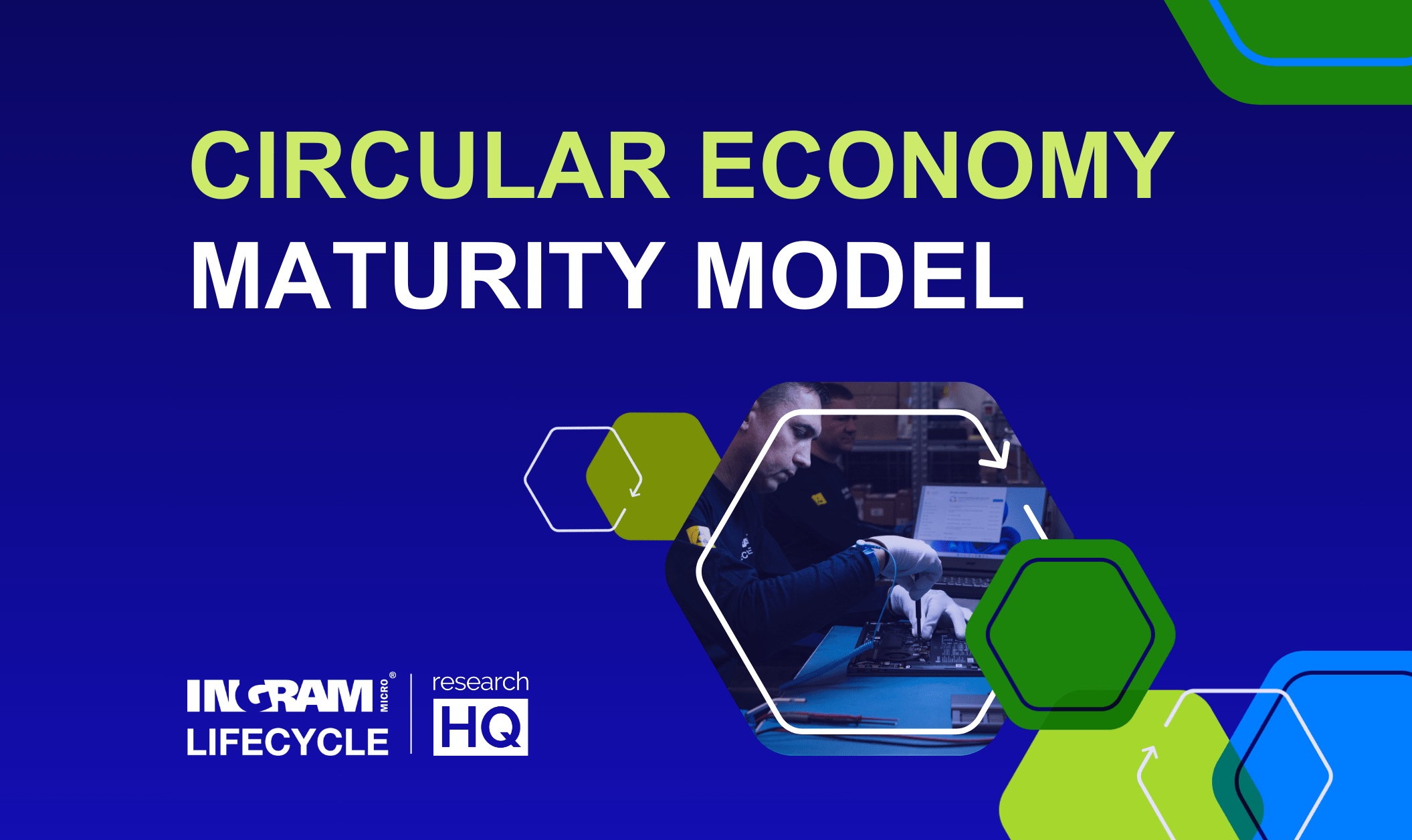Fraudulent returns in the consumer electronics sector are becoming increasingly costly and unsustainable. What might appear to be a simple product return can be a calculated attempt to exploit vulnerabilities in your supply chain.
Ingram Micro Lifecycle is a reverse logistics specialist with first-hand experience intercepting everything from bricks and baby wipes to fireplace grates. In over two decades of supporting manufacturers, retailers, and insurance providers with returns management solutions, we’ve seen just how creative return fraud can get.
In this article, we explore the growing threat of fraudulent returns, how they impact your bottom line, and what steps you and your logistics partner can take to mitigate risk and protect value recovery.
What is a “fraudulent return”?
A fraudulent return is when the end user or consumer of a product intentionally packages the wrong product to be sent back to a retailer or manufacturer. This is to trick the receiver into issuing a refund while the fraudster keeps the genuine product.
Online purchases are typically returned 3x as frequently as store-bought items, with an estimated value exceeding $247 billion. This poses a huge risk when a percentage of these are fraud attempts.
At Ingram Micro Lifecycle, we’ve seen a wide range of items being issued in place of electronics. We get enough Swizzels Drumsticks, packets of Parma Violets, and Refreshers chews to stock up for Halloween trick or treaters.
It goes beyond sweets, too – some of the random items we’ve received include soap, bricks, baby wipes, lasagne sheets, and scrap metal.

Your eyes don’t deceive you – that is indeed the grate out of someone’s fireplace that we’ve been sent. People try to trick the system by matching the weight or giving the package any weight.
The most popular replacement for an electronic return, however, is air. That’s right. We’re flooded with empty packaging. The fraudsters assume that their refund will be triggered as soon as the returns label is scanned at one of our facilities. For some businesses, that may unfortunately be the case, and that’s why this type of fraud is prevalent.
Every time we receive an item that isn’t the electronic product expected, the end user is trying to expose and exploit a vulnerability in the returns policy and process. If they succeed, then they’ll try the same fraud repeatedly. They’ll possibly also share the scam with others so they too can take advantage.
The impacts of fraudulent returns on a business
At any point where a product may be received back into the supply chain, there is a risk of fraud. This risk is increased where the customer may be due a full or partial refund.
An increase in sales naturally correlates with an increase in fraud attempts. Fraudsters plan to take advantage of busy periods, like during sales and holidays, such as Christmas. They aim to exploit the pressure the business is already facing from increased sales.

When these attempts at fraud are successful, there are multiple impacts on the business. Some will be more tangible than others and will have cross-departmental impacts.
Financial
This is perhaps the most obvious impact of fraudulent returns, as this is what the fraudster is targeting. They intend to get their money back while retaining the genuine product. Being successful will mean that the business pays out with a refund and loses that money.
There are multiple layers to the financial impacts of this, however. As the business hasn’t received its product back, it can’t recover value from the return. There is no product for them to resell. Any return typically has a residual value, which could be uplifted following recovery tactics. That is also lost to the business because of fraudulent returns.
There’s the associated logistics and packaging costs of facilitating the return. The vendor may have paid a courier to transport the return, rather than this coming at a cost to the customer. In some cases, they may send out packaging to reduce the effort the customer has to go to in returning the item.
The business will face disposal costs for the packaging and items that have been sent to them. Although they may recycle as much as possible, there’s still a cost to facilitate this with a waste management partner.
Contact center agents and staff costs will rise with the handling of excessive fraudulent returns. Their time will be spent liaising with fraudsters and processing scam packages.
Resources
Staff spend time dealing with fraudulent claims rather than genuine or core business issues. This detracts from the time that could be spent dealing with legitimate customers and concerns. Often, scammers are the ones who try to dominate a situation by shouting the loudest, so they will consume more time as your agents liaise with them. They will try to increase the pressure, forcing your business to cave and provide a refund rather than following the investigation process.
Mental health
Anyone dealing directly with a scammer is likely to have their mental health impacted in some way. A call center agent may speak to the scammer, who demands their refund. The agent feels pressured to make a decision that they don’t want to make. The person committing fraud could resort to aggressive and verbally abusive language. The agent may struggle to compartmentalise personal slurs and attacks, lowering their self-esteem.
Brand integrity
Once a weak point in your processes and policies has been successfully identified, fraudsters may share the details with others. More people will take advantage, leading to repercussions on a larger scale. Your brand then becomes associated with these disingenuous activities.
There’s the risk of receiving reviews and comments online in a negative light because you refuse to provide a refund. Whether the package was deemed fraudulent or not, negative reviews easily create mistrust among future customers.
Logistics
There are the financial costs associated with product returns, which we covered above. In addition to this, the packaging generates unnecessary waste, and the returns journey contributes to carbon emissions.
Sustainability
The business has the extra packaging to dispose of, along with the random items they’ve been sent. These are all products that someone else has bought and decided to use incorrectly. This is a huge waste of the associated resources that went into those products, be it sweets, baby wipes, or lasagne sheets.
Space
Receiving and storing fraudulent returns until they can be processed can take up a lot of space. These dominate space that should be used for genuine returns and may mean that you make accommodations in acquiring extra space.
Preventing fraudulent returns
Unfortunately, it may be impossible to completely eradicate fraudulent returns, but there are steps to take that can reduce the risk of them occurring.
Ensure you have a robust returns policy. This should be accessible to your customers in advance of their purchase and easy to read. Cover all eventualities in this documentation to limit the loopholes and gaps that can be exploited. If you (or scammers) identify a gap, then amend your policy as soon as possible to close it.
Don’t allow refunds on receipt. Above, we explained how a scan of the returns label is sometimes the trigger for releasing funds to a customer. This gives you very little protection if the package contains the wrong item. Make sure the package is physically checked and contents confirmed to be as expected before the refund is given.
Connect returns to an order. If a customer can buy from you directly, ensure that they can initiate a return through that order. It will connect the returns with a genuine order, so you know that the customer has bought the item they want to return. For example, on your website, let the customer raise a return against an order number in their order history. This won’t be possible in all cases, such as if you’re a manufacturer and the product was sold through a retailer. But get evidence upfront that they have made the purchase of the item they want to return. This will at least limit people trying to return items they’ve never owned, just to get money.
Crack down on fraud today
Fraudulent returns create a cascade of financial, operational, and reputational risks for consumer electronics brands. From lost inventory and inflated support costs to reputational damage and sustainability setbacks, the effects are wide-ranging and often underestimated.
Partnering with an experienced returns management provider equips your business with the infrastructure, insights, and fraud prevention strategies needed to secure your reverse supply chain. Find out more about the benefits of outsourcing your returns management for tackling fraud in part 2 next week.
Connect with one of our reverse logistics experts today to discuss how we can protect your operations and uphold your brand integrity.













